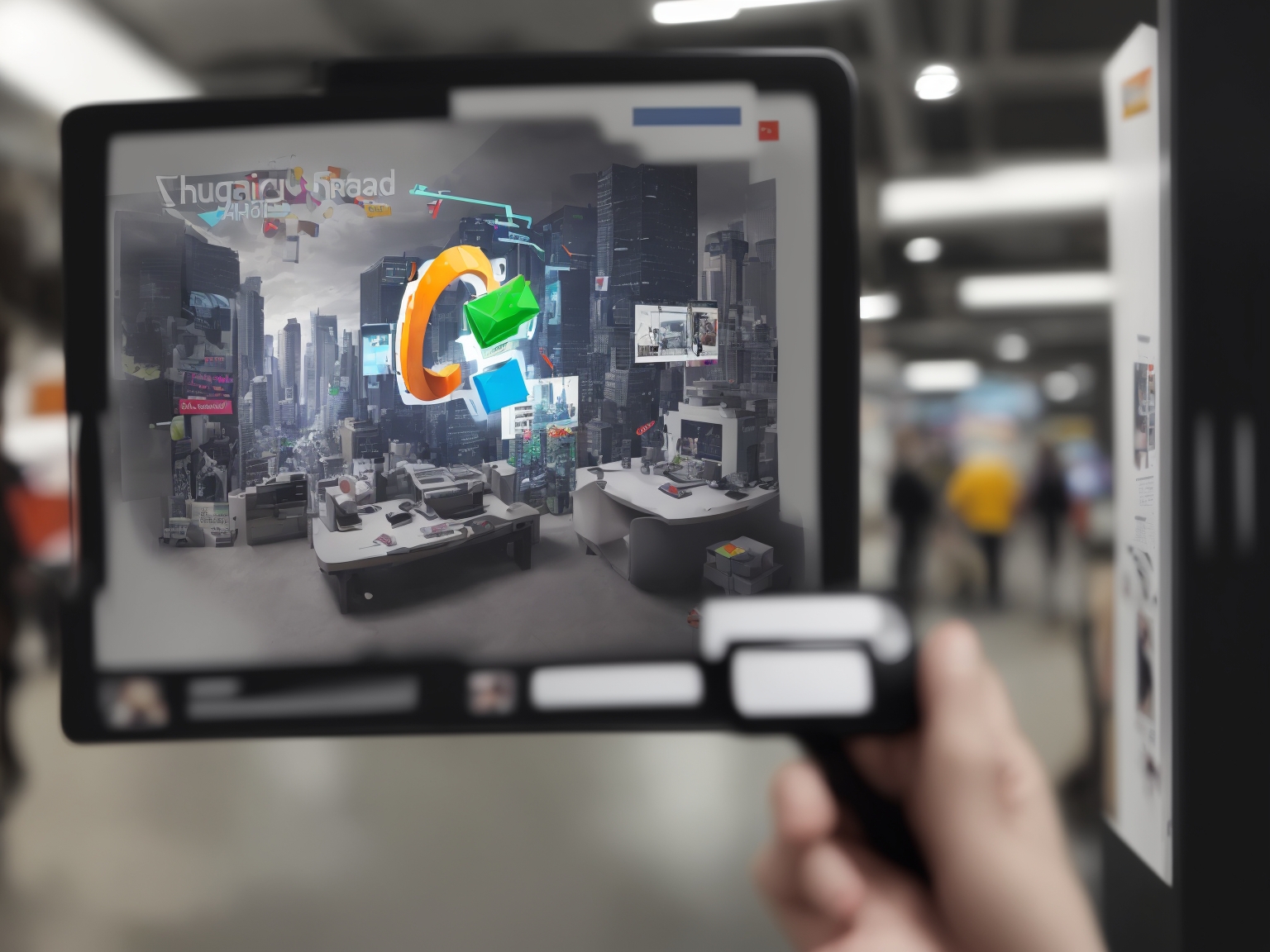**Title: Unveiling the Future of Marketing: Augmented Reality Advertising**
**Introduction**
Welcome to a new era of marketing! Today, we’re diving into the fascinating world of Augmented Reality (AR) advertising – a technology that’s set to revolutionize how businesses connect with their customers. Let’s explore this exciting frontier together.
**What is Augmented Reality Advertising?**
– AR is an interactive, digital experience overlaid on the real world
– AR advertising integrates brand messages into this digital layer, creating immersive and engaging experiences for consumers
**Why Augmented Reality in Advertising Matters**
– Enhances user engagement: AR ads provide interactive, personalized experiences that captivate users
– Boosts brand recall: The unique, memorable interactions created by AR ads help to solidify a brand’s identity in consumers’ minds
– Increases customer loyalty: By offering innovative and valuable experiences, businesses can foster long-term relationships with customers
**Key Benefits of Augmented Reality Advertising**
– **Immersive Experiences**: AR allows brands to transport users into their products or services, creating a more tangible connection
– **Data Collection**: AR ads can gather valuable user data to help businesses understand customer preferences and behaviors
– **Location-based Targeting**: With AR’s ability to interact with real-world locations, businesses can deliver relevant ads at the right time and place
**How Augmented Reality Advertising Works**
1. **Image or object recognition**: AR apps recognize a trigger image or object in the user’s environment
2. **Data processing**: The app processes this information to create a digital overlay that blends seamlessly with the real world
3. **Interactive Experience**: Users can engage with the overlaid content, such as manipulating 3D objects or accessing additional information
**Examples of Augmented Reality Advertising**
– IKEA Place: Allows users to virtually place furniture in their homes before purchasing
– L’Oréal Makeup Genius: Enables users to try on makeup products virtually before buying
**Frequently Asked Questions (FAQs)**
**Q1. Is AR advertising only for big businesses?**
A1. No, AR technology is accessible and affordable for businesses of all sizes
**Q2. How can I implement AR advertising for my business?**
A2. Partner with an AR development company or use a ready-made AR advertising platform
**Q3. What type of content works best in AR ads?**
A3. Content should be interactive, engaging, and valuable to the user, such as tutorials, product demonstrations, or quizzes
**Conclusion**
Augmented reality advertising is not just a passing trend – it’s the future of marketing. By leveraging AR technology, businesses can offer unique, personalized experiences that captivate consumers and foster long-lasting relationships. As we continue to explore this exciting frontier, we look forward to witnessing the incredible ways in which AR advertising will reshape the landscape of modern marketing.
Stay tuned for more updates on the latest developments in augmented reality advertising!









